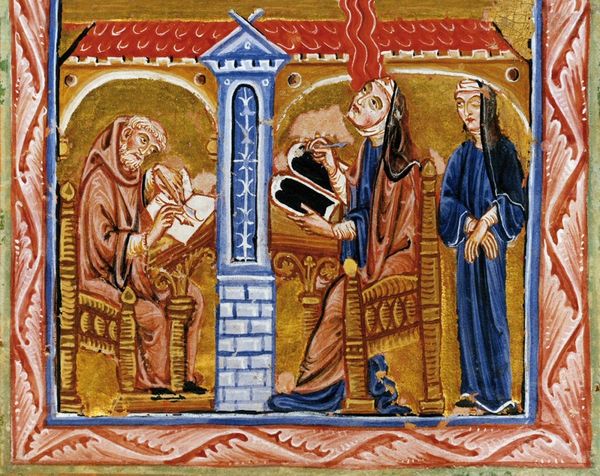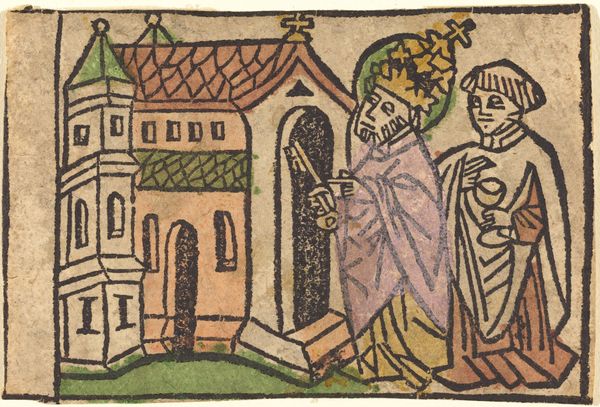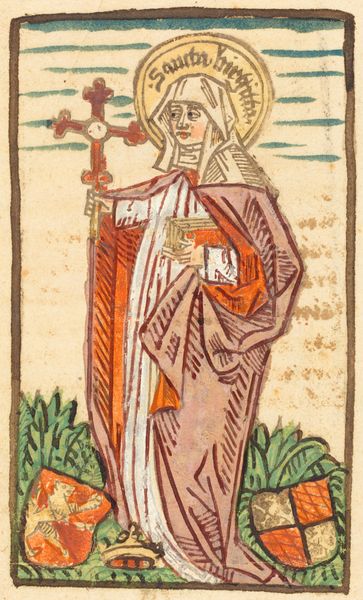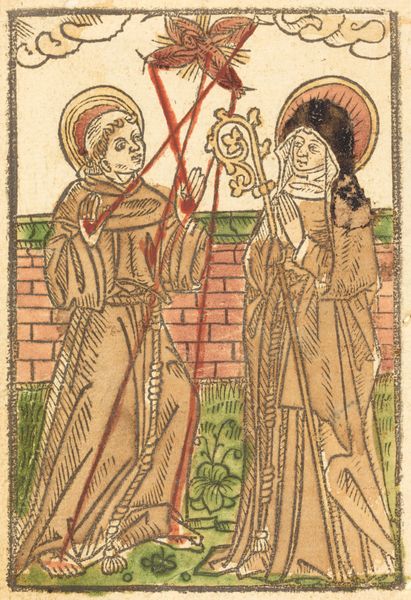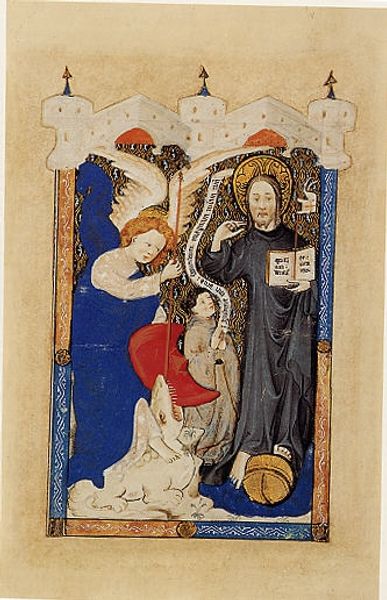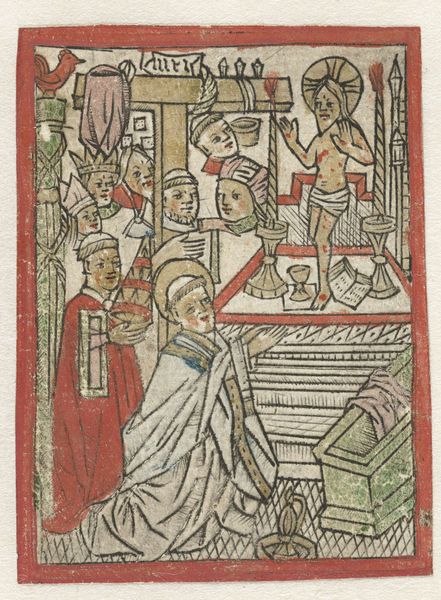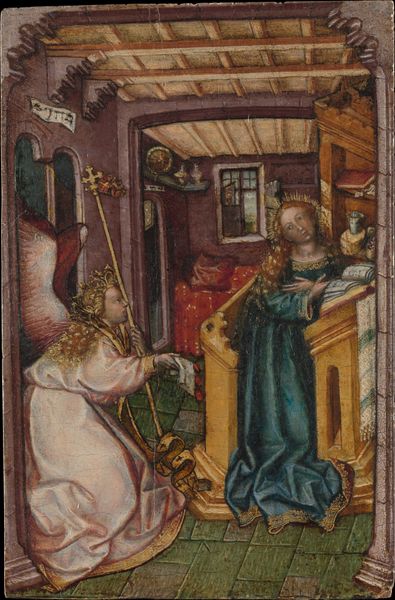
Frontispiece of Scivias, showing Hildegard receiving a vision, dictating to Volmar, and sketching on a wax tablet
0:00
0:00
tempera, painting
#
medieval
#
tempera
#
painting
#
history-painting
Copyright: Public domain
Curator: Here we have the frontispiece of Scivias, a visual and spiritual record of Hildegard of Bingen's visions. It's executed in tempera, and what strikes you first about it? Editor: Immediately, it's the claustrophobia. The gold ground is stunning, of course, but the composition feels so intensely compressed; the figures and architecture seem almost squeezed into this small space. Curator: Notice how the gold serves not just as background, but as an ethereal, dimensionless space emphasizing the otherworldly source of Hildegard's inspiration. The architectural elements—the stylized arches, the towers—frame the figures, directing our gaze. Editor: Yet, this isn't simply about divine inspiration. The image explicitly presents the female mystic author as intellectual, powerful. Hildegard is actively engaged with recording the divine. It speaks volumes about female authority and knowledge production in a medieval context, especially the ways religious institutions enabled women of agency. Curator: Precisely! The linear quality of the drapery, the almost diagrammatic representation of the architectural forms – these choices create a sense of clarity, an articulation of complex spiritual ideas into a visual language. Look at how light floods across Hildegard, it pours across the architecture towards Volmar. Editor: It’s really remarkable that in an era often painted as misogynistic, here’s an image of a woman at the very center, authoritatively shaping religious discourse with the assistance of the monk Volmar who is, by compositional standards, secondary. What also jumps out at me is the color palette—the limited range but, in terms of symbolism and semiotics, why does that fiery red jump from her head? Is that a tongue of flame, the color of passion, power, or the holy spirit? Curator: Or it’s just the aesthetic effect the artist was seeking, it lifts and adds focus, it directs the eye up and across. The color is striking and balanced. Editor: This invites viewers to reflect on the power of the feminine intellectual, offering an implicit critique of patriarchal structures by placing Hildegard at the very heart of religious revelation. Curator: For me, the painting acts as a record of the way that visions can inform creation and become documents through the careful application of technique. Editor: It’s a call to excavate these stories that give dimension to medieval history, which otherwise feels so distant to us today.
Comments
No comments
Be the first to comment and join the conversation on the ultimate creative platform.
